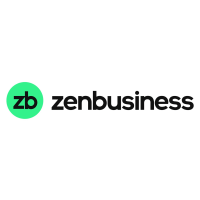How to Keep Cash Flow Healthy: Stability Moves for Small Business Owners
Cash flow is the pulse of your business. When it’s steady, decisions get clearer, risks shrink, and you breathe easier. When it’s tight, everything starts to wobble — hiring freezes, debt piles, even your sleep suffers. And unlike profitability, cash flow is real-time: you can’t delay payroll or rent just because invoices are pending. If you’re a small business owner navigating day-to-day operations, maintaining a healthy cash flow isn’t a back-office issue. It’s a survival skill. And it’s a trust-building tool with your team, your clients, and your future.
Forecasting: Think in Future Tense
A reliable cash flow forecast doesn’t just show where you stand today — it models where you’ll stand next month, even if things shift. If you're not already modeling future revenue with more precision, you’re flying blind when conditions change. That means projecting inflows and outflows based on contracts, seasonality, and surprise expenses. Most owners do this too loosely or too late. Incorporating scenario modeling — best case, base case, and worst case — helps you avoid panic cuts and stay calm during downturns. Getting it right can mean the difference between last-minute loans and confident investing.
Formation: Build a Boundary Between You and the Business
Blurred lines between personal and business finances quietly destroy cash clarity. One of the most effective fixes is creating a formal business structure — and learning how to form an LLC in North Carolina is a solid place to start if you're in-state. That separation isn't just legal protection; it simplifies banking, taxes, and investor perception. It also signals maturity when seeking financing or partnerships. With structure comes clarity, and with clarity comes control. You don’t need a lawyer to get rolling — just follow the steps and make the split.
Receivables: Close the Delay Loop
Delayed customer payments are one of the biggest sources of silent bleed in small businesses. If you haven’t already tightened your customer payment process, your cash is probably leaking between invoice and deposit. Consider automating follow-ups, enforcing late fees, or offering small incentives for early payment. Dashboards that surface aging receivables let you act quickly — before the conversation gets awkward. You earned the revenue. Now get it in your account.
Payables: Buy Time Without Burning Bridges
It’s possible — and smart — to stretch your payment cycles without hurting your vendor relationships. Just be up front and consistent. Renegotiating supplier terms to increase float can buy you breathing room without relying on short-term credit. Many vendors are open to net-45 or net-60 arrangements if you bring it up early. Even a two-week buffer can reduce the need to dip into reserves. Just don’t ask when you’re already late — that’s not negotiation, it’s damage control.
Tools: Stop Managing by Gut
Too many owners manage cash flow by feel — and that’s a recipe for missed signals. By automating core cash flow functions, you build in real-time visibility and fewer surprises. Look for tools that sync with your invoicing, flag low balances, and forecast shortfalls before they hit. You don’t need a finance degree. You just need to see clearly and act early. The right tools do the scanning for you.
Reserves: Cushion Before You Crash
A cash reserve isn’t something you build after you need it. Maintaining an emergency fund lets you keep your operation running during a slow month, an emergency repair, or a late-paying client. Start small if you have to — even $250 per week builds a meaningful cushion. Target one to two months of fixed expenses as your first milestone. The difference isn’t just financial; it’s psychological. Peace of mind becomes part of your toolkit.
Planning: Play the Long Game on Purpose
Sustainable cash flow isn’t about reacting — it’s about preempting. Mapping your financial strategy over time forces you to align your spending, hiring, and expansion with long-term goals. Most owners only plan during emergencies. Flip that. Make planning a standing rhythm. Adjust quarterly. Revisit annually. The more you treat strategy as a process, the less likely you’ll be to panic when conditions shift.
Cash flow isn’t just about more money in the bank. It’s about rhythm. It’s about timing your inflows and outflows so your business breathes steadily, not gasps. The best-run businesses aren’t always the most profitable — but they’re almost always the most predictable. They know what’s coming. They prepare. And they stay ready to act. So forecast early, collect confidently, pay strategically, and always know what’s next. The future shows up fast — and your cash flow tells you if you’re ready for it.

